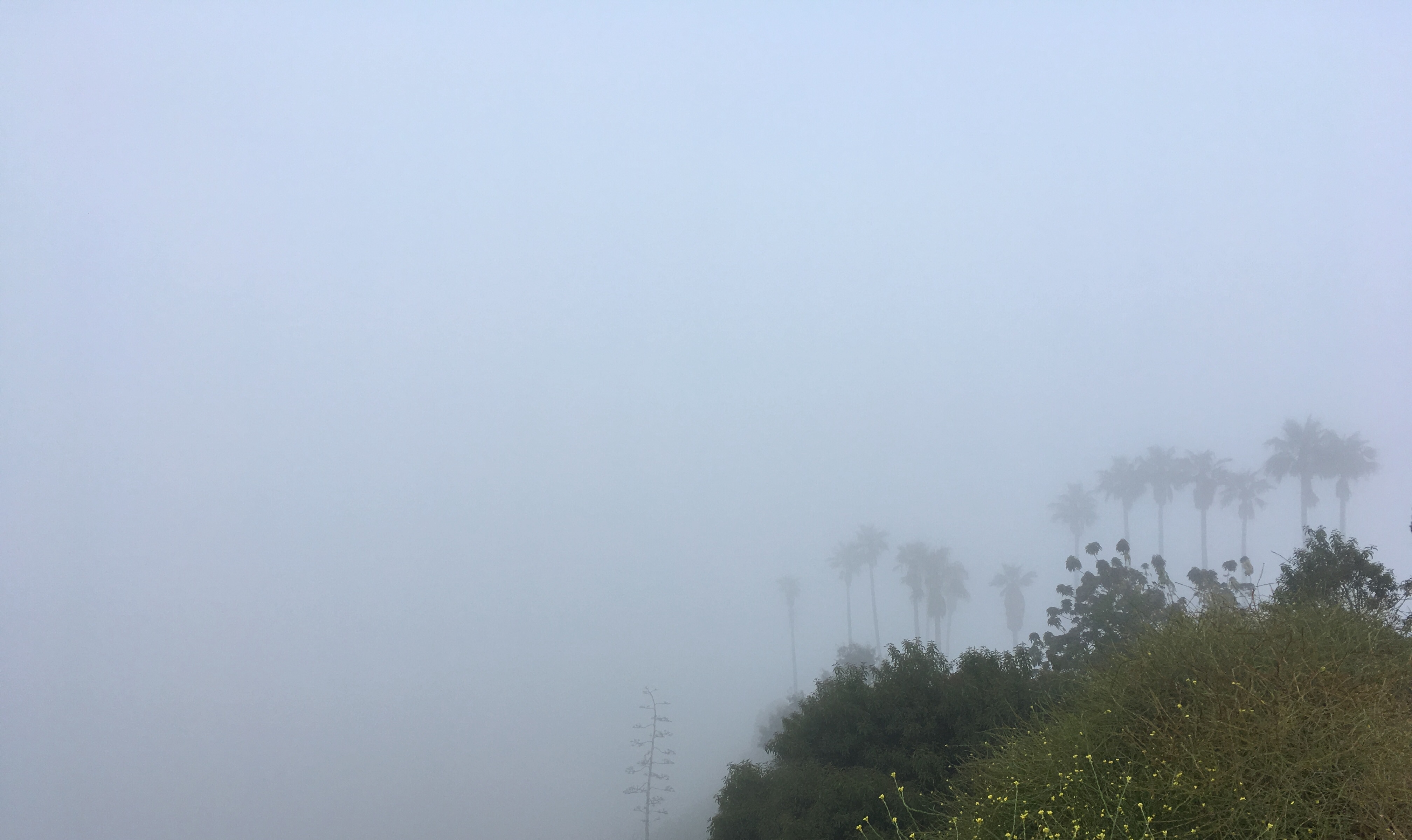
This is the seventh entry in a series in which writers give a report on the weather. Any meteorological statements made may range from the personal to the scientific, from observable weather to the felt.Read the first entry, by Andrew Durbin; the second entry, by Amina Cain; the third entry, by Madeleine Watts; the fourth, by Andrew Durbin; the fifth, by Josephine Rowe, the sixth by Ryanaustin Dennis.
June started with an air conditioner’s gentle whoosh, like the white noise machine in a psychiatrist’s office, but turned down low.
For the first few days of the month, Los Angeles was skyless: neither sunrise nor sunset bookended the day. At most there was a strip of orange, faint, way out over the coastline. The difference between ocean and horizon.
June 2. Outdoors the sky sank lower until it buried the mountaintops. Bananarama played “Cruel Summer” on the car stereo (on KOST 103.5). When the clouds broke, it was a studio backdrop: the Hollywood sign, Griffith Observatory, the sky spread wide and scattered.
In the neighborhood of Los Feliz, fifteen miles from the Pacific coast, it is often easy to forget that L.A. is a beach town. June gloom reminds you.
The Los Angeles Times reported that air pollution killed more people here than in any other U.S. city—1300 “excess deaths” in 2017.
Throughout June, atmospheric CO2 levels remained near record highs after peaking at 415 parts per million the month before.
June 4. Doppler radar mistook migrating ladybugs for a storm. In the news: a swarm of more than a thousand earthquakes in the San Gabriel Valley. On the Times’ website, a forty year-old photo of a woman on a smoggy day—driving a convertible, wearing a gas mask.
L.A.’s air remains unhealthy, the city still the smoggiest in the country.
One hot morning, I watched from the top of Griffith Park’s Mount Hollywood, a thousand feet above the city, as smog pooled below. Nearby hills became islands, their tops jutting above the ozone. Just over downtown’s towers’ heads: a dark gray line, perfectly horizontal.
Our phones alerted us to the toxicity of the air, while one spectacular cirrus, long-necked like an egret winged a westward course on curled plumage that suddenly transformed into a poodle’s hindquarters.
June 6. The sky is featureless, a non-place, a pause, a hiatus between weather.
The forecast keeps saying the clouds will break up, and we’ll get partial, or even total, sun. This never happens. Instead, the sky reaches down to rub itself against the surface of the earth. The horizon, already obstructed by mountains,...
You have reached your article limit
Sign up for a digital subscription and continue reading all new issues, plus our entire archives, for just $1.50/month.
Already a subscriber? Sign in




